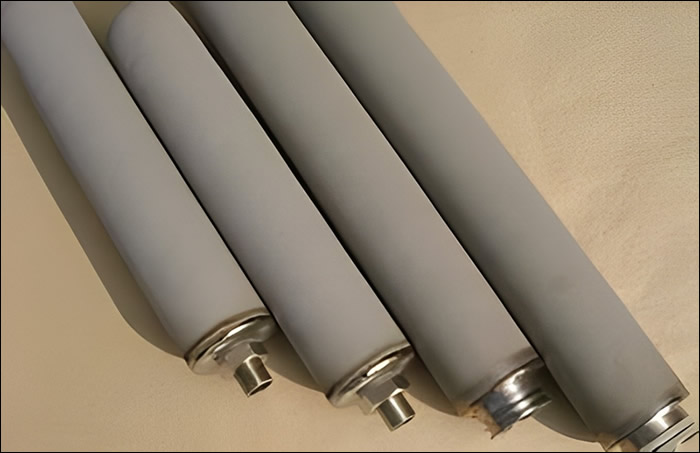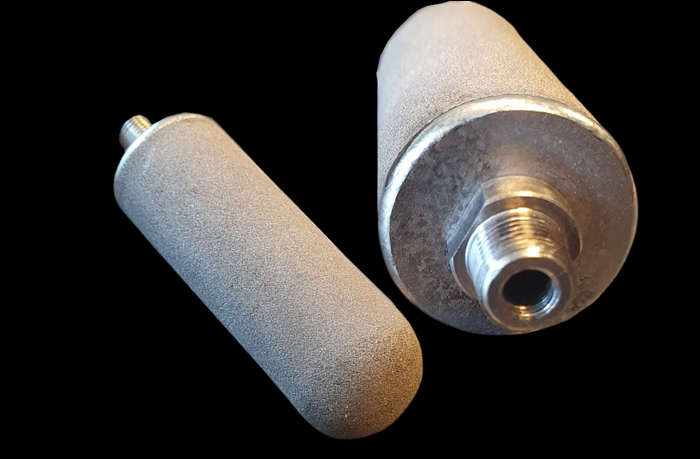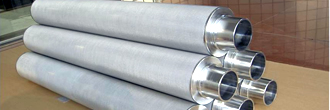Sintered Powder G-Class Filter
G-Class Filter is air filter based on the European standard EN 779. In EN 779, air filters are classified into different groups based on the average efficiency at capturing particles.
G-Class ( Group G) filters are considered coarse filters, classified according to the old EN 779 standard:
G1: Efficiency of 65% or less for 10 µm particle size.
G2: Efficiency between 65% and 80% for 10 µm particle size.
G3: Efficiency between 80% and 90% for 10 µm particle size.
G4: Efficiency of 90% or more for 10 µm particle size.
Filter material: G class filter can be Non-metal filter and sintered metal powder filter.
G-Class Filter - Sintered Powder Filter

Features
Material - Sintered Powder
1, Structure: Sintered filters have a fixed porous structure formed by fusing powder particles, which may offer more consistent pore sizes than woven or non-woven filters.
2, Porosity: Sintered powder filters are known for their high porosity, which can be controlled during the sintering process. The interconnected pores can offer uniform and consistent filtration.
3, Mechanical Strength: Sintering enhances the mechanical strength of the filter, making it more robust and resistant to wear and tear compared to non-sintered counterparts.
4, Thermal Resistance: The sintering process generally makes the filter element resistant to higher temperatures.
5, Chemical Resistance: Depending on the base metal or alloy used in the powder, sintered filters can exhibit excellent chemical resistance, making them suitable for corrosive environments.
6, Reusability: Sintered filters are generally cleanable and reusable. Depending on the contamination type and level, they can be backwashed, cleaned with appropriate solvents, or even burned off to remove accumulated particles.
7, Efficiency: Depending on the sintering process, sintered filters can achieve very fine filtration levels, down to sub-micron levels.
8, Maintenance: Metal sintered filters can often be cleaned and reused.
9, Flow Characteristics: The porosity and structure of sintered filters can be controlled, influencing flow rates and pressure drops.
10, Durability: Metal or metal alloy sintered filters can have high mechanical strength and long service life.
Main Applications
Gas/Air Filtration:
In pneumatic systems or processes that require clean air/gas.
Chemical Process:
For filtering aggressive chemicals, especially when the filter's base material (metal or alloy) is resistant to that particular chemical.
Pharmaceutical & Biotech:
In applications that require sterilization and rigorous cleaning.
Food & Beverage Processing:
For ensuring the purity of products and processes.
Environmental Monitoring & Pollution Control:
For capturing particulates from air or emissions.
Pre-filtration:
Serving as pre-filters before finer filtration processes, protecting downstream components and extending the life of finer filters.
G Class Filter Element

Filtration: 5 um
Material: Sintered powder filter
Filter size: L-80mm, D-30mm, PT-1/8"
Filtration - 5 Microns:
To capture particles 5 microns in size or larger. Depending on the specific construction and design, this level of filtration can effectively remove dust, pollen, some bacteria, and many suspended particles from a fluid or air stream.
Products List
 Stainless Steel Wedge Wire Water Well Screen
Stainless Steel Wedge Wire Water Well Screen